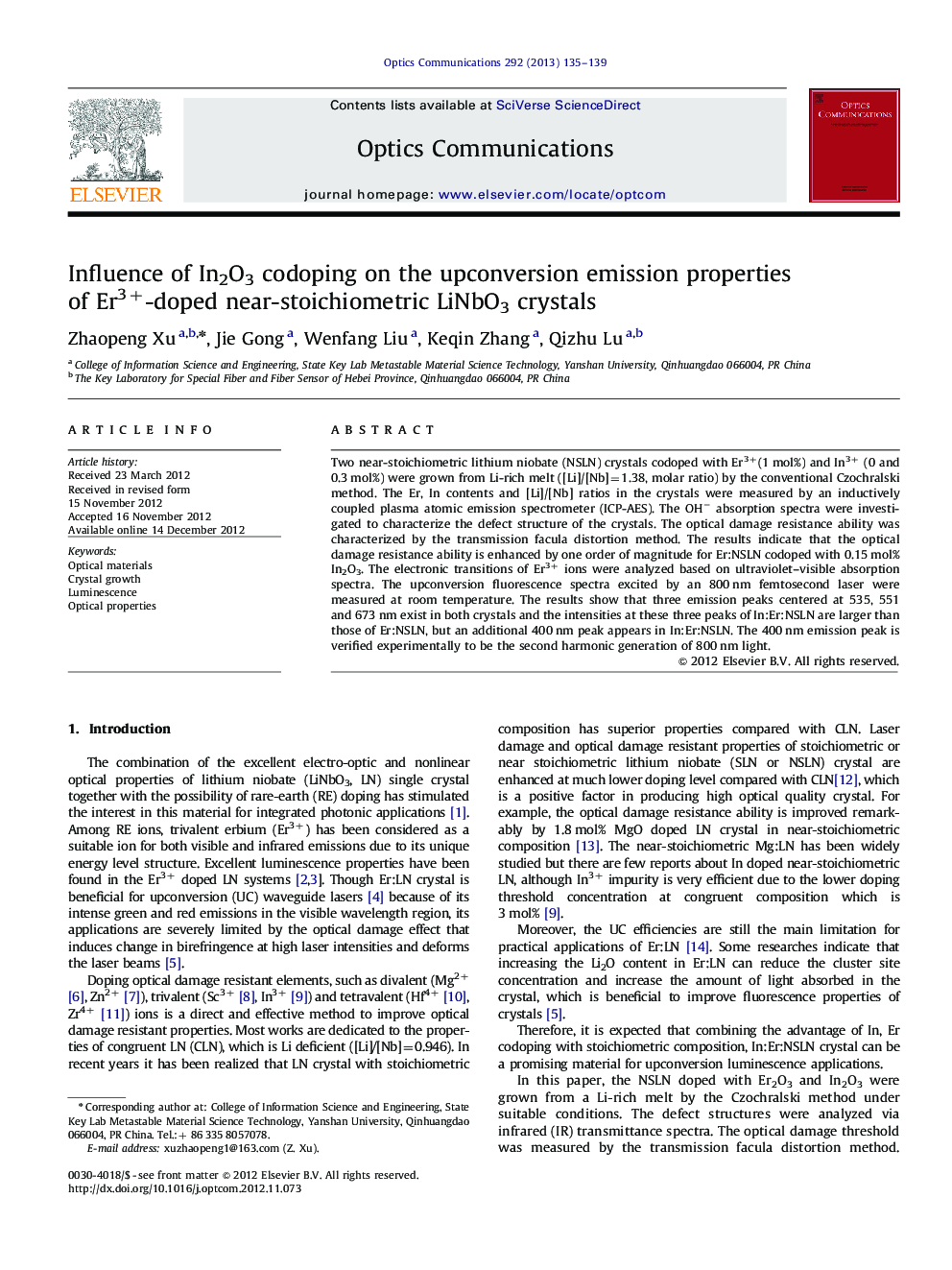| Article ID | Journal | Published Year | Pages | File Type |
|---|---|---|---|---|
| 1535659 | Optics Communications | 2013 | 5 Pages |
Abstract
Two near-stoichiometric lithium niobate (NSLN) crystals codoped with Er3+(1Â mol%) and In3+ (0 and 0.3Â mol%) were grown from Li-rich melt ([Li]/[Nb]=1.38, molar ratio) by the conventional Czochralski method. The Er, In contents and [Li]/[Nb] ratios in the crystals were measured by an inductively coupled plasma atomic emission spectrometer (ICP-AES). The OHâ absorption spectra were investigated to characterize the defect structure of the crystals. The optical damage resistance ability was characterized by the transmission facula distortion method. The results indicate that the optical damage resistance ability is enhanced by one order of magnitude for Er:NSLN codoped with 0.15Â mol% In2O3. The electronic transitions of Er3+ ions were analyzed based on ultraviolet-visible absorption spectra. The upconversion fluorescence spectra excited by an 800Â nm femtosecond laser were measured at room temperature. The results show that three emission peaks centered at 535, 551 and 673Â nm exist in both crystals and the intensities at these three peaks of In:Er:NSLN are larger than those of Er:NSLN, but an additional 400Â nm peak appears in In:Er:NSLN. The 400Â nm emission peak is verified experimentally to be the second harmonic generation of 800Â nm light.
Related Topics
Physical Sciences and Engineering
Materials Science
Electronic, Optical and Magnetic Materials
Authors
Zhaopeng Xu, Jie Gong, Wenfang Liu, Keqin Zhang, Qizhu Lu,
